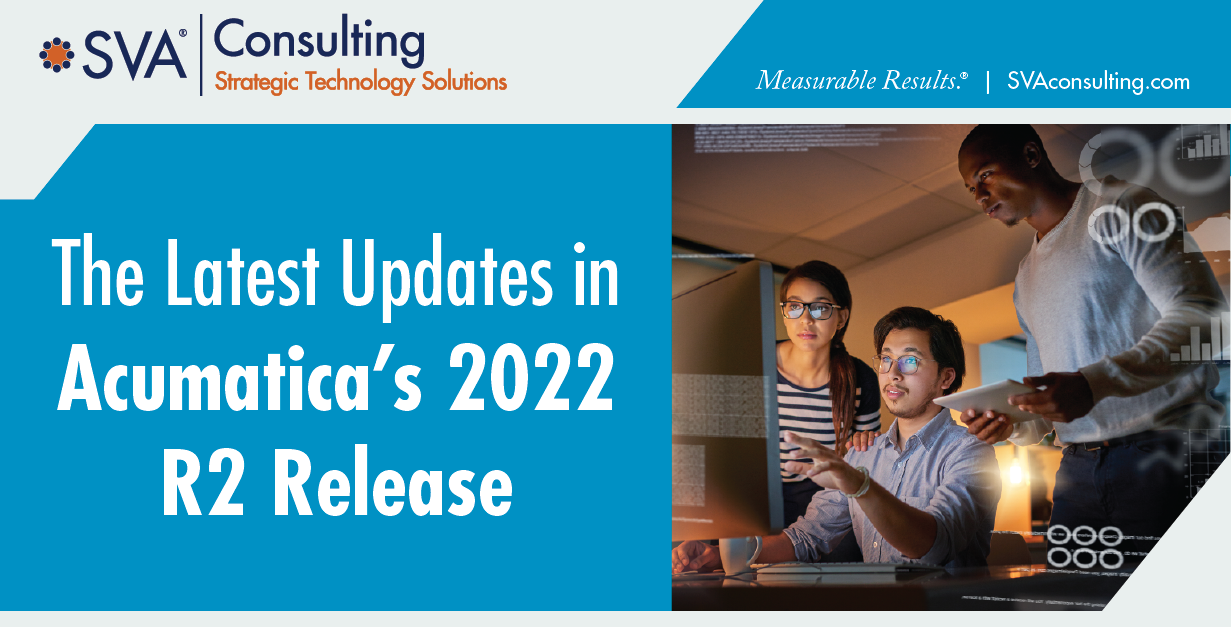





Discover the valuable insights our consultants provide. Subscribe to our Insights blog to receive email alerts whenever we post something new!


Published on: Dec 21, 2022 9:54:42 AM by Andrea Hayes
Updated on: March 19, 2025
What’s new in Acumatica 2022 R2?
The latest release offers innovations in usability, includes the increased ability for businesses to target new geographic markets and segments, and sharpens the targeting of micro-markets and verticals.
Let’s dive in and explore the new features and enhancements you can use to benefit your business.
Acumatica has released enhancements to localization and integration of Canada-specific features at the company level to simplify setup, reporting, and management of companies with legal entities in multiple countries. This will allow a business to expand markets with Canadian localization for multiple base currencies.
This enhancement is supported across a wide variety of printed reports, forms, and calculations. One example is the cash discount calculation that is unique to Canada ((balance – tax total) x terms %). What's helpful is that if you switch between entities at the company level, the recalculation will automatically occur.
Enhancements are also available with the T5018 form on the e-file screen. On the printed forms, one current limitation is how it gets exposed to the sitemap, but you can have unique Canadian forms that, once applied to the sitemap, can be accessed and toggled. There is also additional functionality around tax registration numbers and printing parameters for Canadian taxes.
Similar to the Canadian localization feature, you are able to select a base currency on a company basis within a tenant. This enables increased functionality around consolidation, where historically there was the need to have individual tenants to accommodate this, then a series of connecting workflows was necessary for consolidated reporting.
Specifically for 2022 R2, Acumatica is continuing to focus on the multi-base currency support across modules. One of these is the manufacturing support available in a managed release. Currently, Acumatica is still working through the payroll integration for multi-base currency support, so the company is continuing to invest in that support to allow multi-base currency to be compatible with other modules.
There is enhanced usability with support for contracts and for Dunning Letter distribution. There were some limitations in 2022 R1 regarding these two components, but now there is full usability available with multi-base currency options.
Bank feed integration is where Acumatica can automatically import bank transactions. Historically, this was done through a bank file (such as a QFX or an OFX file) that would be manually loaded to import those transactions, perform a reconciliation, or set up transaction rules to create transactions in Acumatica.
Acumatica began investing in the ability to integrate directly with certain banks to eliminate the step of manual upload. In versions preceding 2022 R2, you could deploy this native integration with banks through a customization package. Now you no longer need to do that as 2022 R2 has added this feature.
How it works is there is a collection of financial institutions (many U.S. and Canadian financial institutions) which are plugged into bank aggregators such as Plaid and MX. These bank aggregators are connected to the cloud service in Acumatica which helps the user interface.
Some enhancements beyond this integration are better visibility into the available bank feeds, the accounts that are connected, and better control.
One of the biggest improvements in 2022 R2 functionality is the expense management for the creation of expense receipts from corporate credit cards. In previous versions when that customization package was deployed, even though there was a connection directly with the bank, if you brought in expense receipts, you had to go through a manual batching process for corporate card expense receipts.
Acumatica has introduced functionality that allows you to map those expense receipt items from your corporate card directly to an employee. This is helpful because now there is the ability to activate a pre-configured business event to notify an employee when they have an expense receipt waiting for approval. The employee can review the expense receipts, confirm the accuracy, and then it can be routed through the claims process. So there is a lot of automation around the expense receipts for corporate cards.
A few additional features are the security around bank credentials, account mapping, and automated imports. It is extremely helpful as you're bringing in these transactions to eliminate the need for a user to manually initiate the retrieval of that data. Acumatica can schedule these processes so that the transactions are automatically flowing into your system on a daily basis.
In 2022 R1, there was the introduction of GL anomaly detection, but there were quite a few limitations. This function was primarily focused around the reclassification process in Acumatica, so for those customers who weren't using the reclassification process, they received very little benefit out of the GL anomaly detection.
 10 Key Features of the Latest Acumatica Product Update (R1)
10 Key Features of the Latest Acumatica Product Update (R1)
Now in 2022 R2, Acumatica has introduced a new level for GL anomaly detection to look at 18 months of history and categorize it based off of four areas:
There have been great enhancements around what can be viewed within the anomaly detection. And as this machine learning process gets trained by you as the user, you're able to deploy the level of learning for that particular feature. Over time, it will become more and more accurate to indicate which transactions are out of the ordinary to help support your audit.
In Acumatica, there is a selection of approval options and one that had been highly requested is the GL transaction. Similar to approvals on AP bills, as well as purchase orders on purchase receipts, that information now is available for the GL transaction screen.
Here where you can enable approvals, you have the ability to pull in a greater selection of fields such as from the GL Account Table, GL Batch Table, and GL Tran Table. Some helpful applications would be using it for control account approval, dollar thresholds, time thresholds, and project IDs.
To assist you with Acumatica’s latest release, here are two resources available in the portal:
If you have questions or require assistance with utilizing these new updated Acumatica tools, contact SVA Consulting at technicalsupport@svaconsulting.com. We are here to help.
© 2022 SVA ConsultingShare this post:

Andrea is a Principal for SVA Consulting, LLC, a member of the SVA family of companies. Andrea has a BA from University of Wisconsin, Madison and more than fifteen years of analyst and consulting experience in the private and public sectors. She has expertise forming vision and strategy to help small to mid-size businesses utilize people, processes and technology to optimize operations and realize their goals. Andrea has a diverse background merging analytics, consulting and strategy. She has played a pivotal role in numerous, large scale, ERP, analytics, and data integration implementations across a variety of industries. Prior to joining SVA Consulting, Andrea worked at an affective neuroscience laboratory, contributing to study design, managing analyzing data, and writing grants. She is also published in Nature Neuroscience Journal. Andrea has experience working in the life sciences industry as a management consultant for clients specializing in medical affairs.







contact@svaconsulting.com

(800) 366-9091

1221 John Q Hammons Dr., Suite 201, Madison, WI 53717

18650 W. Corporate Dr., Suite 205, Brookfield, WI 53045

1600 Utica Ave S, 9th Floor,
Saint Louis Park, MN 55416

7135 E. Camelback Road, 230, Scottsdale, AZ 85251

109 West Commercial Street, Suite 107, Sanford, FL 32771
©2026 SVA Consulting, LLC. All Rights Reserved. | Privacy Policy | Cookie Policy | CCPA
